We now have the Minew D15N beacon in stock. It’s small, attractive, wearable beacon with a range up to 50m.
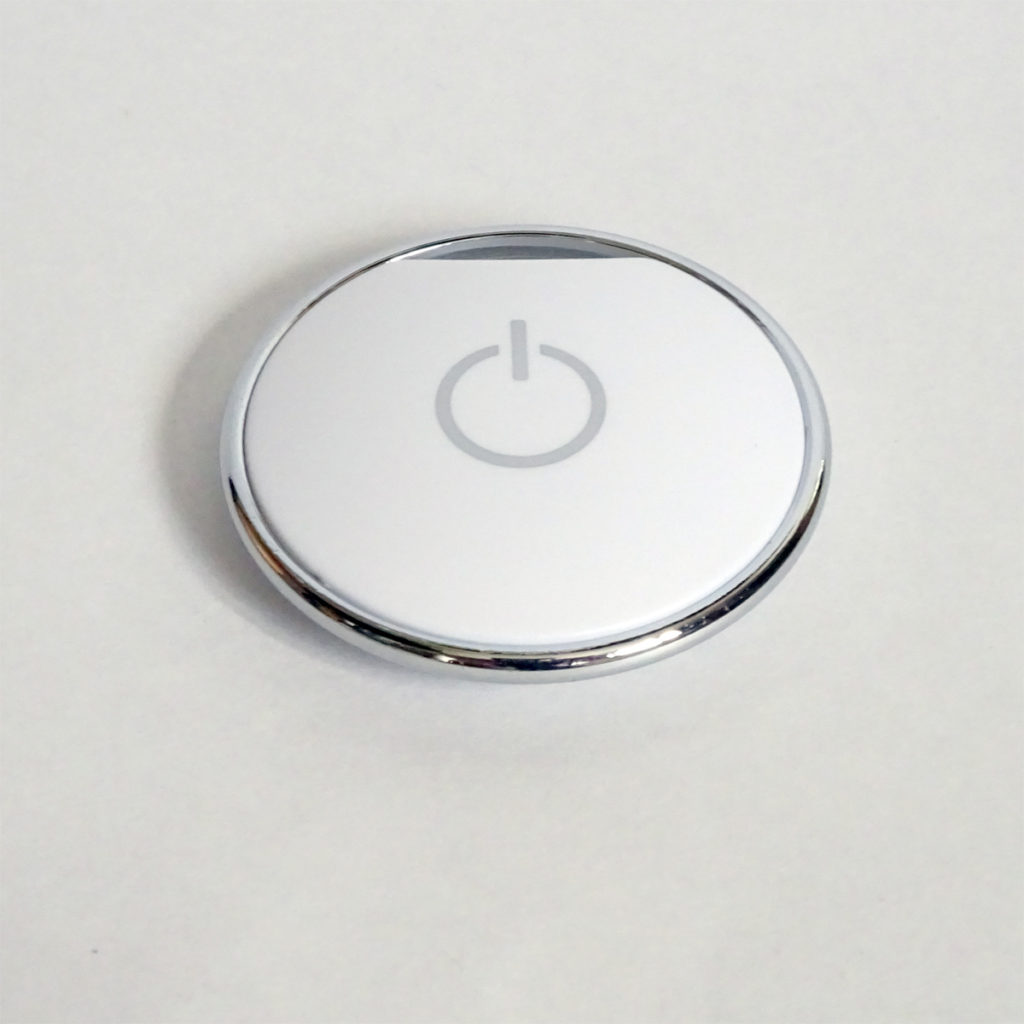
It advertises up to 6 channels that can be iBeacon, Eddystone UID, Eddystone URL, Eddystone TLM and device info.
iBeacon, Eddystone, Bluetooth, IoT sensor beacons, apps, platforms
We now have the Minew D15N beacon in stock. It’s small, attractive, wearable beacon with a range up to 50m.

It advertises up to 6 channels that can be iBeacon, Eddystone UID, Eddystone URL, Eddystone TLM and device info.
We have two new variants of the Minew S1 sensor beacon in stock. The first is the same as the temperature/humidity S1 but adds an accelerometer.

The second, the S1T has a temperature probe to allow sensing away from the beacon but doesn’t have the humidity nor acceleration sensors.
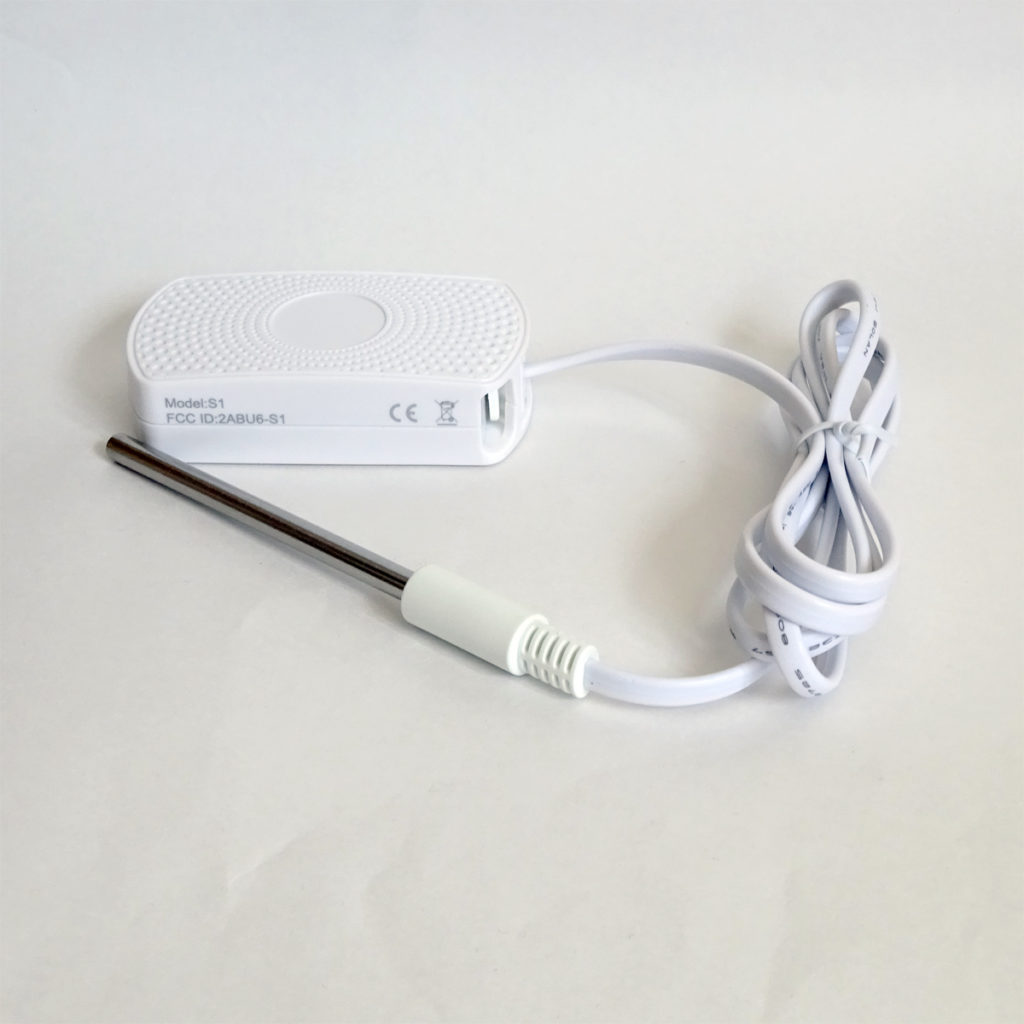
We sometimes get asked if it’s possible to send custom advertising. All Bluetooth advertising is based on Bluetooth standards and our post on the Cheat Sheet shows some examples such as iBeacon and Eddystone.
The first question is why you might want to send your own advertising. Using the iBeacon or Eddystone protocol is sufficient in the majority of cases where you just want to a unique id at the Bluetooth LE receiver (usually but not always an app or gateway). The most common case of custom advertising is sensor beacons that need to send their own sensor data.
Nevertheless, some projects use custom advertising that signifies something extra other than a unique id. This is project specific and might, for example, indicate something about location, asset or person. Very few beacons support custom advertising without full re-programming (as opposed to setup). Re-programming involves replacing the SoC firmware and is a significant undertaking. Some of the MeeBlue beacons support setup of a custom channel that can contain any data.
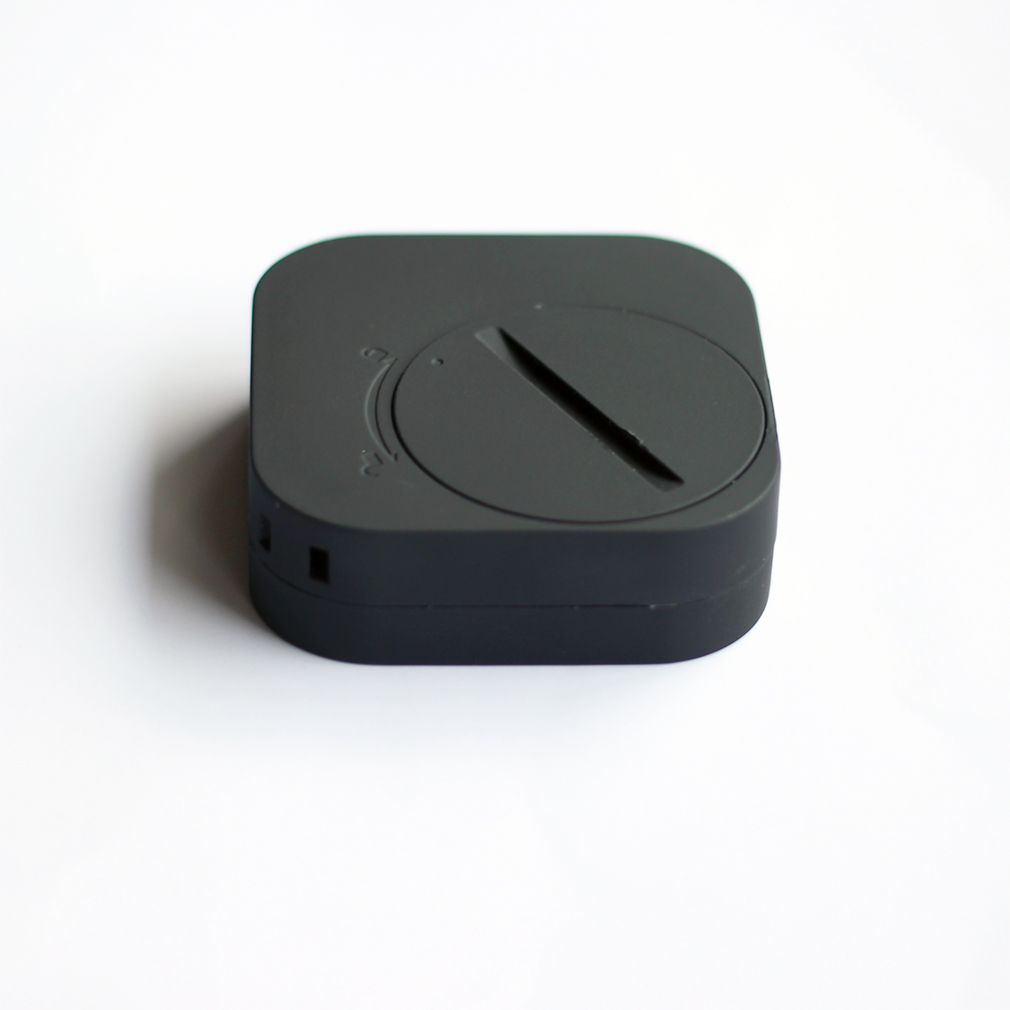
There’s a useful tool called bettercap that claims to be the “Swiss Army knife for WiFi, Bluetooth Low Energy, wireless HID hijacking and Ethernet networks reconnaissance and MITM attacks”.
While you might want to use it to test Bluetooth LE security, a more interesting use is for debugging Bluetooth LE. If you are scanning for advertising or creating or using GATT, for example with a beacon, it’s sometimes useful to have a separate way of exercising Bluetooth LE.
Bettercap is written in Go and runs on GNU/Linux, BSD, Android, Apple macOS and the Microsoft Windows. However, a bug in Windows and macOS prevents the Bluetooth commands from working. Hence, it’s for Linux or Android only.
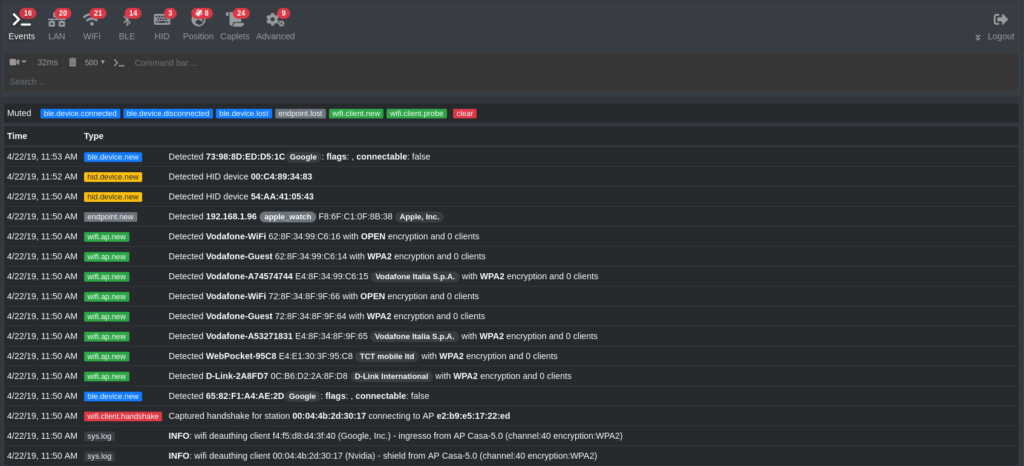
Better caps runs in the browser and you can create scripts.
UPDATE: There’s a tutorial on Medium.
Dialog Semiconductor, the manufacturer of the SoC chip in some beacons, has an informative article on How Bluetooth Mesh and IIoT are Reimagining Factories and Warehouses. It explains how the recent introduction of Bluetooth mesh has created new opportunities in the Industrial Internet of Things (IIoT).
“The manufacturing industry is absolutely ripe for potential with Bluetooth mesh”
IDC
“Industrial sensors and smart buildings among other use cases, are expected to outpace the overall Bluetooth LE market by 3X through 2022”
Research and Markets
The article mentions preventive maintenance, air quality sensing, asset tracking, robot control systems and traditional air conditioning as possible applications for Bluetooth Mesh. However, a key insight is that once a mesh network is in place it can be used for applications beyond those originally envisaged.
Read about Beacons and the Bluetooth Mesh
We have re-implemented our Beacon Solutions Directory making it easier to use and more up to date:
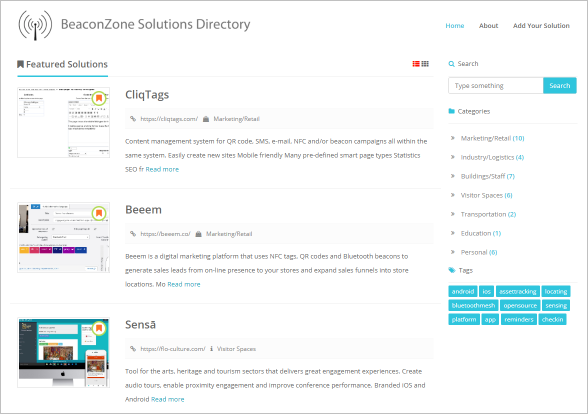
We have removed listings for solutions that no longer exist, updated solutions that have changed focus and added some newer solutions that use generic beacons.
We found that a considerable number of marketing/retail solutions no longer exist and only the stronger ones remain. This is mainly due to the demise of Eddystone URL.
There’s an upsurge in checkin/checkout solutions presumably partly due to recent ruling by the European Court of Justice that said that EU companies must have something in place to provide an “objective, reliable and accessible system” that allows the duration of time worked each day to be measured.
The use of beacons in visitor spaces is also a growing area with solutions ranging from single use kiosks to event management platforms.
Generally, support for beacons is being added to existing, mature solutions rather than, as previously, new solutions being created solely around beacon functionality.
The Bluetooth SIG has a useful video on Engineering Tomorrow’s Connected Construction Site.

Bosch’s IoT and Mobile Lead NA, Eli Share explains how stakeholders need to concentrate on the value proposition. They also need to work with ecosystem partners to realise solutions.
We have previously mentioned that antenna design is a complex area that will slow the rollout of Bluetooth AoA direction finding solutions. What are the issues?
Theodoros Prokic of the KTH Royal Institute of Technology has a new paper on the Antenna Design for Angle of Arrival Measurement in Access Control Applications (pdf) that explores the antennas needed for two sides of an in an inside-outside scenario.

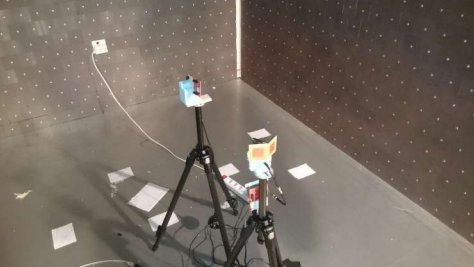
The paper provides an analysis of the challenges the antenna designer faces when creating an AoA solution. Issues include orientation and polarization, matching, coupling, reflections, phase center, and physical size. Designing and creating antennas can easily lead to inconsistent results due to the affects of hardware, cables and other testing equipment in the vicinity.
Gartner has a new report Hype Cycle for the Internet of Things 2019, in which they say:
“The Priority Matrix shows that many IoT technologies are 5 years from mainstream adoption. However only one innovation profile will reach maturity in 2 years, indoor location for assets.
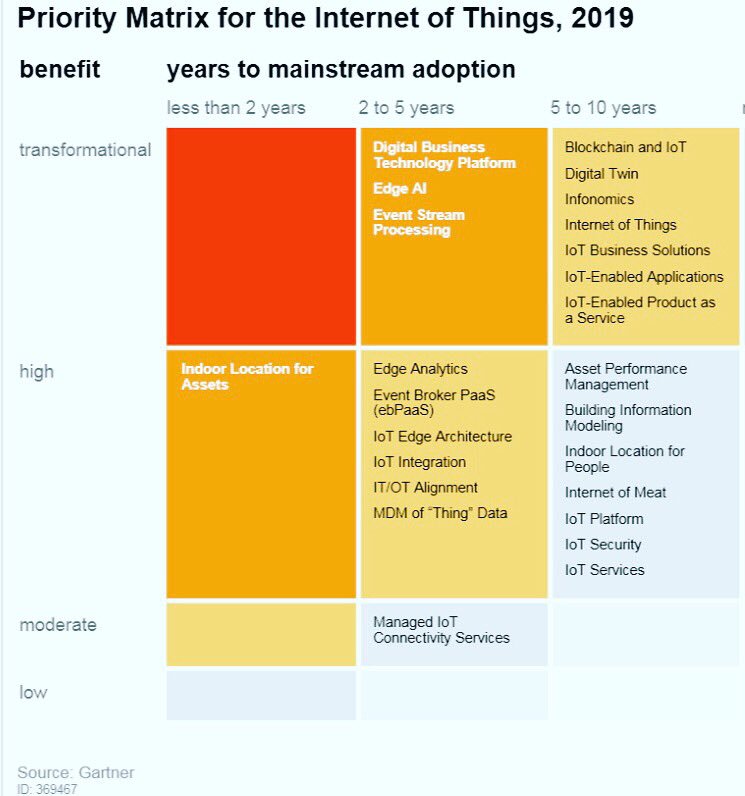
So why is ‘indoor location for assets’ more likely to achieve mainstream adoption sooner than other technologies? It’s because there are clear benefits for most companies and off-the-shelf software such as our BeaconRTLS™ is already available.
Our work with companies shows they are nevertheless cautious. Companies are taking time to understand the competing asset tracking technologies and are performing, sometimes lengthy, trials to determine how new systems will integrate with existing systems. They are considering the implications of SAAS vs on-premise solutions, the availability of second-sourced beacon hardware and the compromises of accuracy vs system complexity and cost.
Mister Beacon has a new interview with Fabio Belloni of Quuppa. It clarifies that while Quuppa uses direction finding techniques and contributed to the Bluetooth 5.1 direction finding standard, their solution is based on Bluetooth 4 and is a proprietary, not standards based solution. Their solution will continue to be provided alongside their new products based on Bluetooth 5.1.
The interview mentions how the Bluetooth 5.1 direction finding standard might need to evolve to provide less ‘chatty’, shorter communication in order to be suitable for all usecases, particularly those that are battery powered or need to have very large numbers of assets being tracked.
It’s also mentioned that the Bluetooth direction finding standard doesn’t cover tools needed to setup and control direction finding systems. It also doesn’t specify antenna design that’s a complex area.
As we have also experienced, there’s mention how some Ultra Wideband (UWB) vendors and ISVs are moving to Bluetooth for reduced costs, reduced power requirements and compatibility with other devices (tablets, phones and single board computers) that also use Bluetooth LE.
There’s also a recent article by Quuppa on Quuppa’s Role Regarding the New Bluetooth SIG Direction Finding Feature. It explains how AoD will require work by software operating system providers, hardware ODMs, silicon vendors and direction finding product providers before products appear in the market.